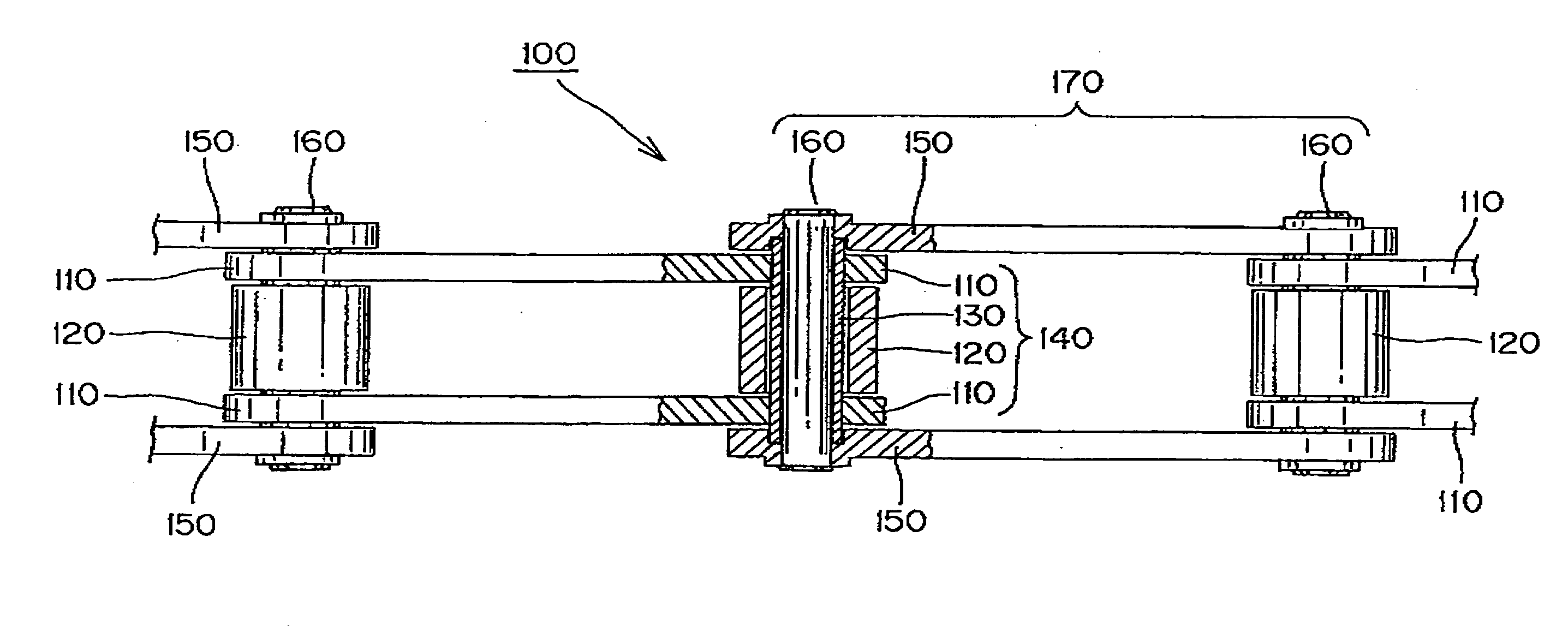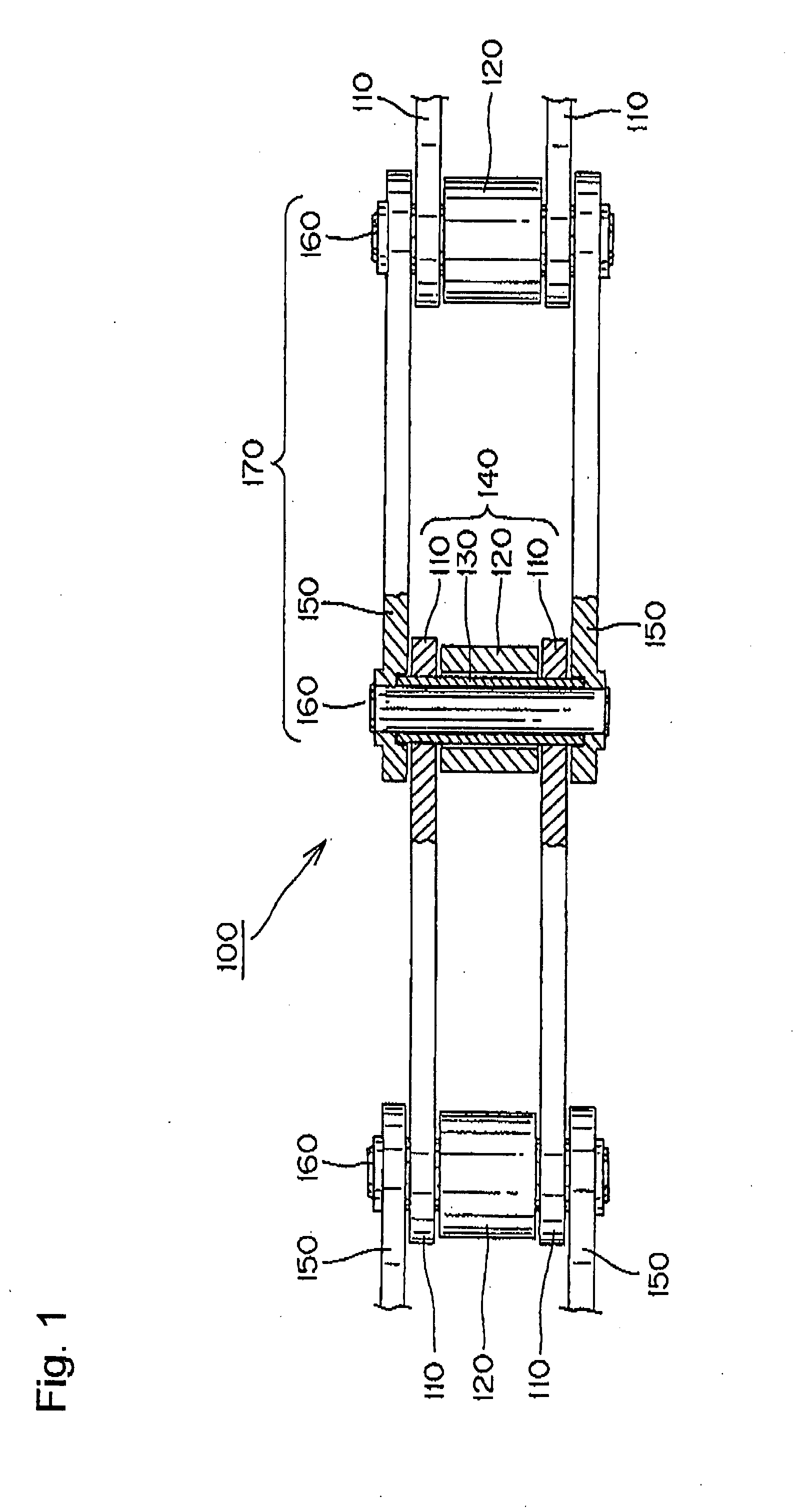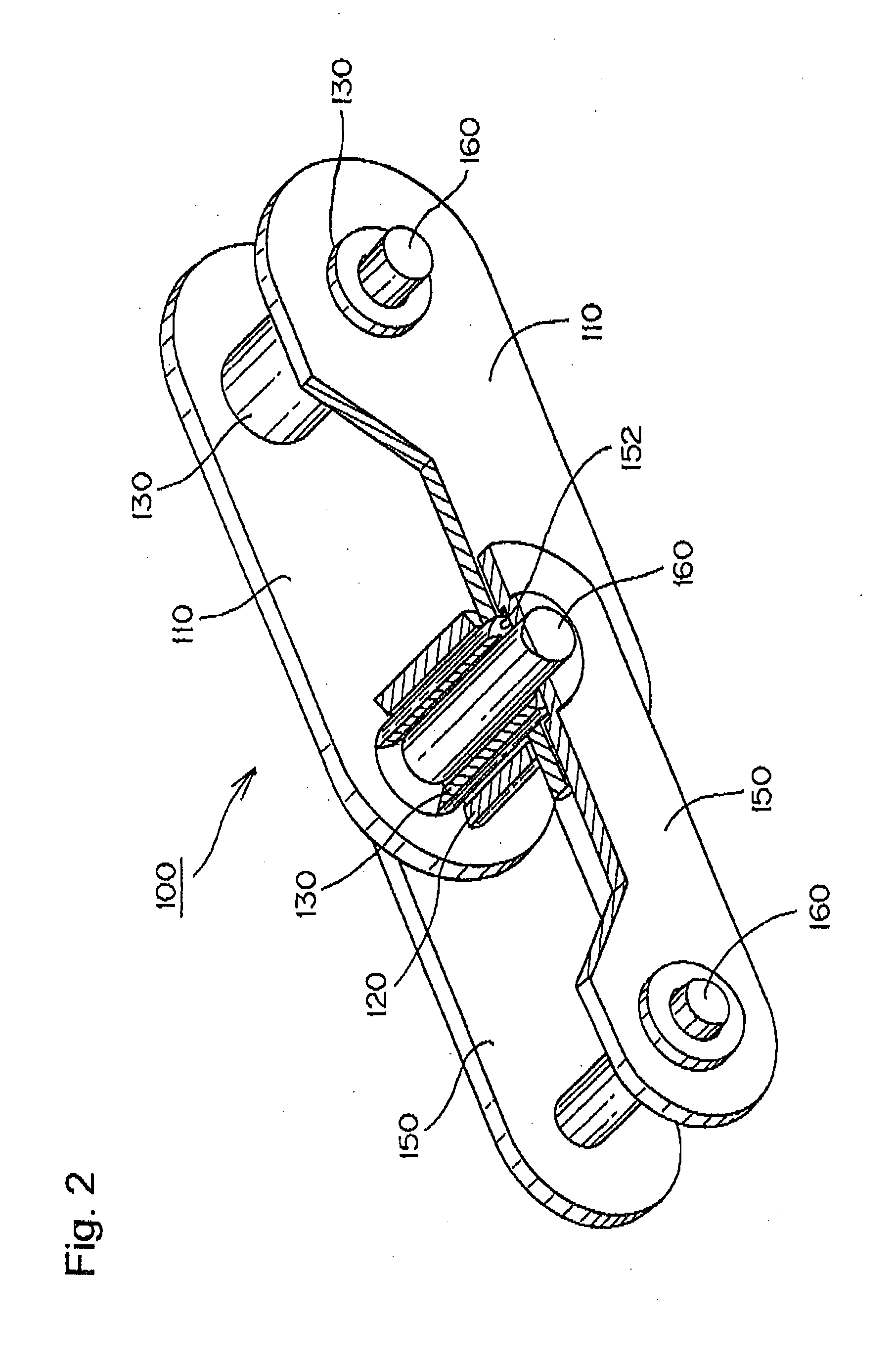Oil-free chain
a technology of oil-free chains and chains, applied in the direction of driving chains, chain elements, gear lubrication/cooling, etc., can solve the problems of increasing the cost of chain production, increasing the overall number of chain parts, and making assembly of chain more difficult, so as to improve the sealing effect, reduce the rate of wear elongation of the chain, and simplify the production of the chain
- Summary
- Abstract
- Description
- Claims
- Application Information
AI Technical Summary
Benefits of technology
Problems solved by technology
Method used
Image
Examples
first embodiment
[0034]As shown in FIGS. 1 and 3, a wear resistant and heat resistant, oil-free conveyor chain 100 according to the invention, includes an inner link 140 and outer links 170. In the inner link 140, the ends of a pair of bushings 130, on which rollers 120 fit loosely, are press-fit into holes 111 in a pair of spaced inner plates 110. In the outer links 170, both ends of a pair of connecting pins 160 are press-fit into holes 151 of a pair of spaced outer plates 150.
[0035]The inner and outer links 140 and 170 are connected by virtue of the fact that each connecting pin 160 loosely fits into a bushing 130. Lubricating oil is sealed between the bushing 130 and the connecting pin 160.
[0036]As shown in FIGS. 2 and 3, bushing supporting bores 152 are formed on the inner sides 153 of the outer plates 150. These bushing supporting bores are open to their full diameter at the inside-facing surfaces of the outer plates. The bushing-supporting bores are formed by pressing the outer plates, thereb...
second embodiment
[0051]In the invention, shown in FIGS. 7 and 8, a wear-resistant and heat-resistant oil-free chain 200 includes an inner link 240 and an outer link 270. In the inner link 240, rollers 220 fit loosely on bushings 230. The ends of each bushing 230 are press-fit into holes 211 of a pair of inner plates 210. In the outer link 270, both ends of a pair of connecting pins 260 are press-fit into holes 251 of a pair of outer plates 250.
[0052]The inner links 240 and the outer links 270 are connected by virtue of the fact that each connecting pin 260 extends through a bushing 230. Lubricating oil is sealed between each bushing 230 and the connecting pin 260 extending through the bushing.
[0053]As shown in FIGS. 7 and 8, the inner surface 253 of an outer plate 250 is provided with a bushing support bore 252 by pressing the outer plate 250, causing a portion thereof to be offset so that, as the bore is formed in the inner side of the plate, a boss is simultaneously formed on the outer side. As a ...
PUM
 Login to View More
Login to View More Abstract
Description
Claims
Application Information
 Login to View More
Login to View More - R&D
- Intellectual Property
- Life Sciences
- Materials
- Tech Scout
- Unparalleled Data Quality
- Higher Quality Content
- 60% Fewer Hallucinations
Browse by: Latest US Patents, China's latest patents, Technical Efficacy Thesaurus, Application Domain, Technology Topic, Popular Technical Reports.
© 2025 PatSnap. All rights reserved.Legal|Privacy policy|Modern Slavery Act Transparency Statement|Sitemap|About US| Contact US: help@patsnap.com



